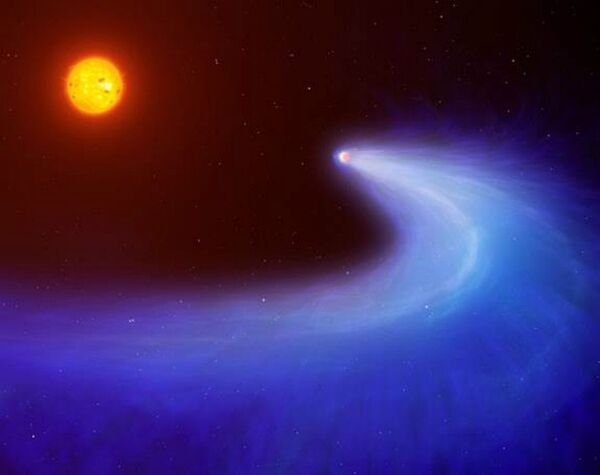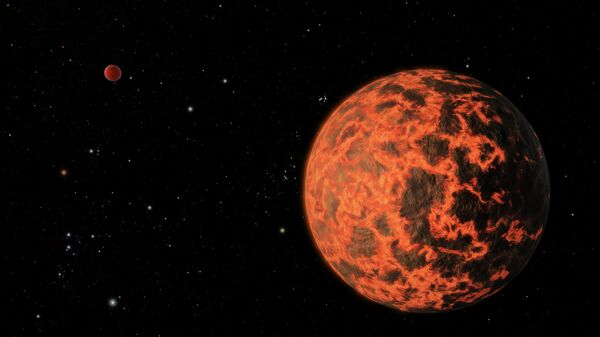The planet was discovered by researchers at the Observatory of the University of Geneva in Switzerland, using data from the Hubble Space Telescope. Their findings were published in the journal Nature on Wednesday.
"This cloud of hydrogen is very spectacular!" said lead author of the study David Ehrenreich, of the Observatory of the University of Geneva in Switzerland.

The planet's gaseous tail is about 50 times the size of the parent star; the team suggest that the huge cloud of hydrogen around the planet owes its existence to the relatively cool temperature of the dwarf star Gliese 436, so the gas is not swept away by radiation.
A video impression of the orbit of planet GJ 436b.
The astronomers believe that such evaporation may also play a part in the history of our solar system since it is known that early Earth had an atmosphere rich in hydrogen, which later escaped.
In addition, such a process could happen to the Earth's atmosphere at the end of our planet's life, when the Sun becomes a red giant and first boils the Earth's atmosphere, before it consumes the Earth.



